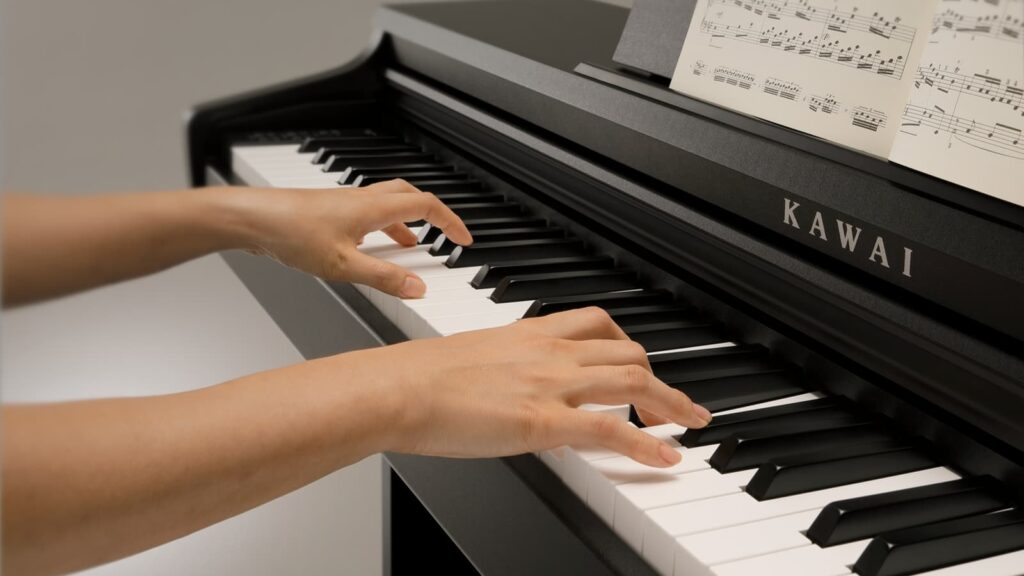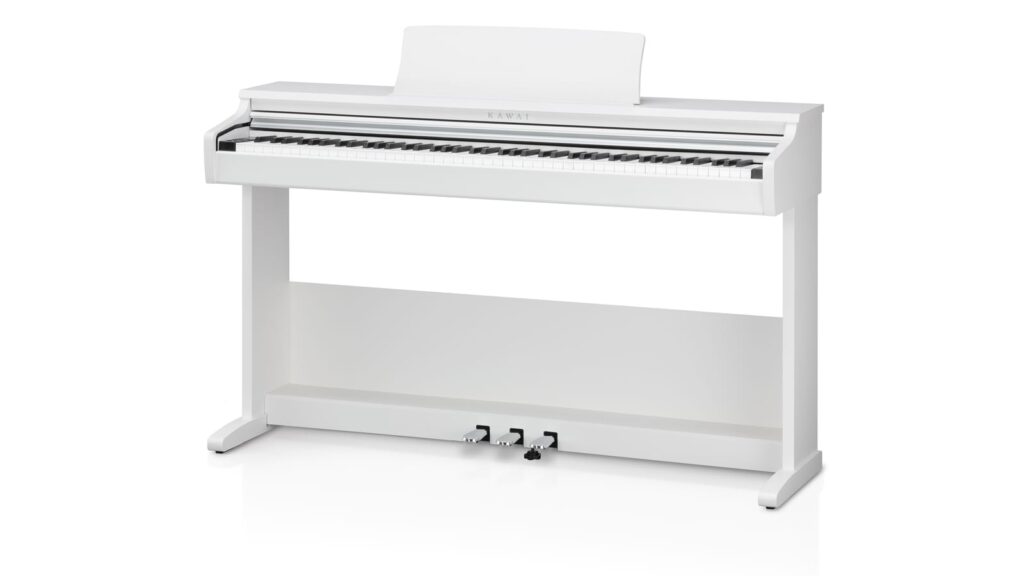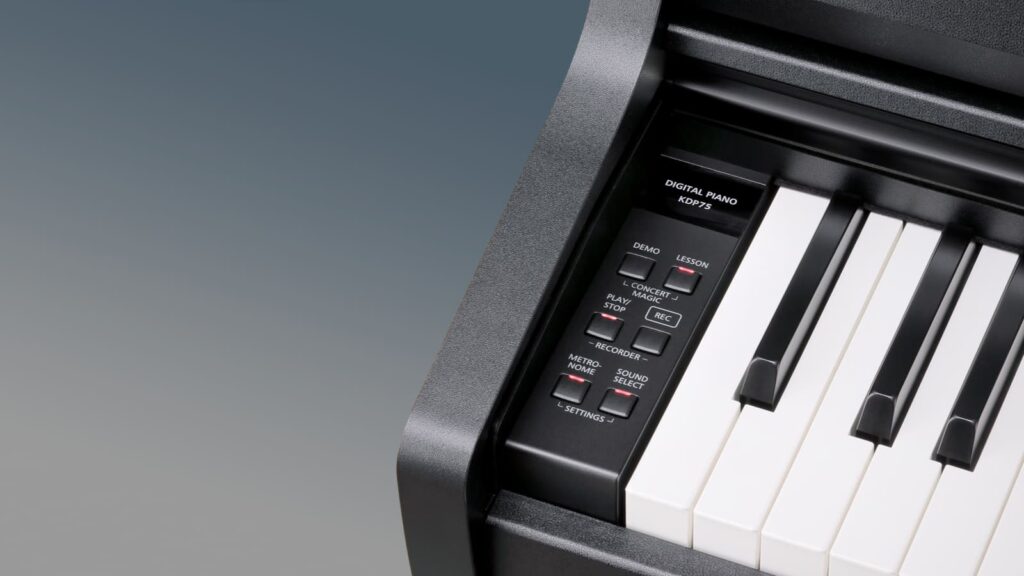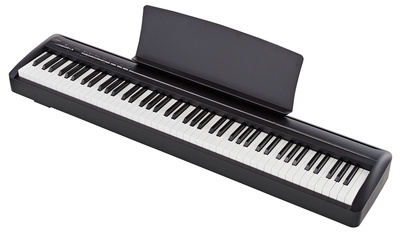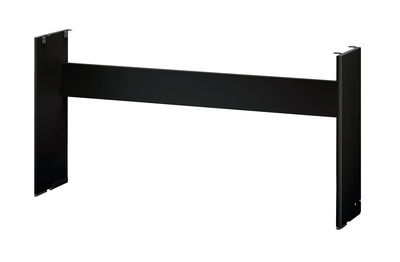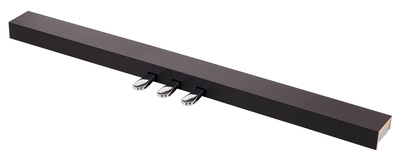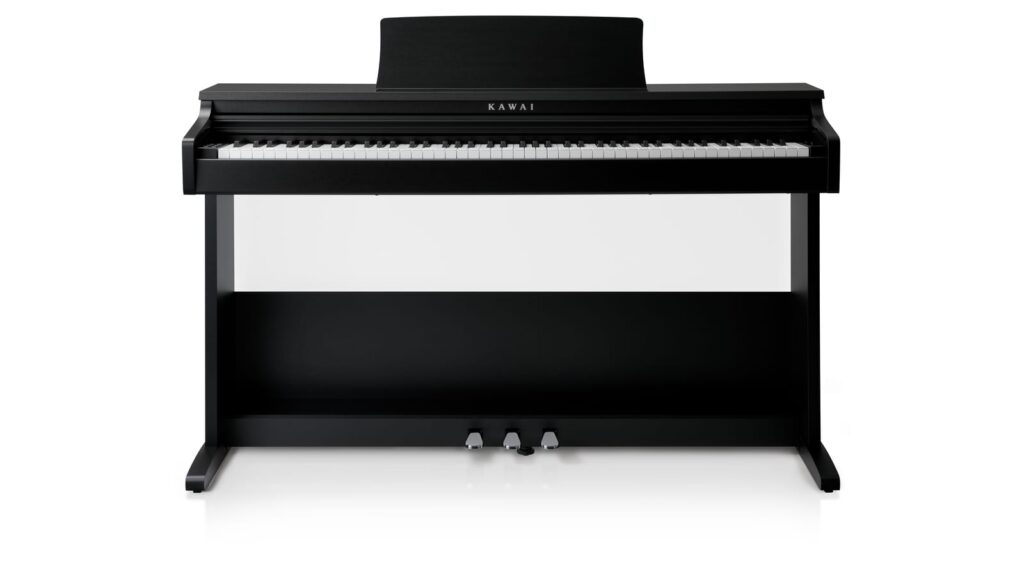Kawai KDP-75 in Comparison
When shopping for a home piano under $1,000, you’ll often find yourself looking at lesser-known brands, mainly because their feature lists seem more extensive. Of course, features are important for a digital piano because it is, after all, an electronic device.
For beginners or those unfamiliar with musical instruments, it might help to think of it like this: Would you buy a cheap TV with plenty of ports and wide compatibility, but poor picture quality and brightness?
With affordable digital pianos, there are two key aspects to focus on, though they can be difficult to assess as a beginner:
- Comfortable playing feel: A keyboard should be comfortable to play and accurately transmit the key action to the sound engine.
- Expressive sound: The piano sound should not only be pleasant but also capable of delivering dynamic expression with velocity sensitivity.
This is where the Kawai KDP-75 focuses its strengths, opting to forgo features like Bluetooth and a larger speaker system. Even so, it competes well with others in its price range by emphasizing playing feel and sound quality.
KDP-75 vs. Kawai KDP-120: The KDP-75’s first competitor comes from Kawai itself. The next model up, the KDP-120, includes Bluetooth connectivity, the upgraded RH-Compact II keyboard, and a more powerful speaker system (2×20 watts).
KDP-75 vs. Yamaha YDP-145: While Yamaha’s smallest home piano is significantly more expensive, it comes with additional features such as USB audio/MIDI. However, the KDP-75’s matte plastic keyboard clearly offers a much more comfortable playing feel.
KDP-75 vs. Thomann DP-32: The most affordable competitor in this comparison is Thomann’s own-brand entry-level model, the DP-32. The Thomann DP-32 lacks many features, such as built-in practice pieces, and cannot compete with the KDP-75 in terms of keyboard quality either. Nevertheless, at just over $600, it is by far the most affordable digital piano in a home piano design.

